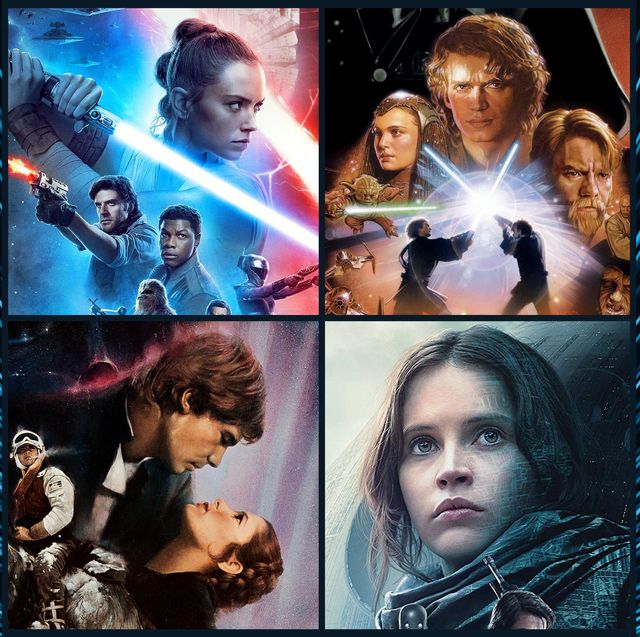

After that we have the option (hence parentheses) of returning to the current, ‘enhanced’ original trilogy to witness the tweaks, changes and additions just as (most) of them were first unveiled in 1997. We then shift gear for the prequels, allowing the younger generation to experience their highs and lows as we first did. Sebastian Shaw no longer looks permanently surprised, Clive Revill and Marjorie Eaton's Palpatine is restored, Yub Nub is played in all its glory and Vader doesn’t let out a squirm-inducing “Nooooooooo!” as he lunges for The Emperor. No Hayden Christensen, no Jedi Rocks, No redundant Jabba sequence in IV, no Greedo shooting first and no gungans. The Time Machine Order requires metaphorically travelling back to when Star Wars was first released and watching the original cut of the film, followed by theatrical cuts of both Empire and Jedi. Written out, it may resemble algebraic nonsense but this is, in our humble opinion, the definitive viewing order for the Star Wars saga. C-3PO’s origins also become murky but that’s hardly a major drawback.

Without Phantom, the prophecy that Anakin will bring balance to The Force is mentioned but never explained, and Anakin’s return to Tatooine in Attack Of The Clones is rendered baffling as we have no knowledge of him being a slave, who Watto is or why his mother has ‘been sold’. Without any character foundation or understanding of his relationship with Amidala, Jar Jar’s role in the Empire’s formation loses weight. Similarly, while widely loathed, Jar Jar is a narratively pivotal character as it is he who is ultimately tricked (in Episode II) into proposing a motion to grant emergency powers to the Chancellor, paving the way for Palpatine to assume the mantle of Emperor. The film sows the seeds of Senator (then Chancellor) Palpatine’s ascension to power through his manoeuvring to displace Chancellor Valorum and assume the premiership. It also makes the ‘flashback’ shorter and less intrusive, improving the Rister model’s flow significantly.īeyond all that, however, there are narrative points in The Phantom Menace that serve a purpose. So no Jake Lloyd (“Yippee!”), precious little Jar Jar (“How wude!”), no weird Amidala/Padme identity confusion and, crucially, no discussion of midi-chlorians, the introduction of which is without doubt the most egregious example of Lucas going off the deep end. The fact that a grown-up Padme no longer meets her husband-to-be when he’s nine also has the benefit of making that whole relationship a little less upsetting.
Free star wars movie series#
Qui-Gon Jinn and Darth Maul are both dead and largely forgotten by the film’s finale (TV spin-off series and Solo notwithstanding) and all of the other characters - Anakin especially - are far more effectively introduced in Attack Of The Clones. When you think about it, Episode I contains very little plot progression. Essentially, it’s the Rister order with The Phantom Menace omitted as narratively irrelevant. Many might see this as the ‘trolling Lucas’ order (it’s not, that one omits the prequels altogether) but Rob Hilton’s Machete Order is certainly a sequence that would cause George some deep regret. only for a strange man with a mullet to materialise next to them and start grinning inanely. Sat amid cavorting bears, Luke Skywalker gazes wistfully out into the forest to see the spirits of Yoda and Obi-Wan gazing benevolently back at him.

At the very end of Return Of The Jedi, The Emperor is dead, Vader is redeemed, freedom and justice have been restored to the galaxy. Don’t get hung up on Greedo shooting first, 'Maclunkey' or the Ewok celebration’s Yub-Nubectomy - there exists a far more problematic change that derails this as the definitive sequence. Lucas spent decades tinkering with his films, so much so that the current ‘original’ trilogy is a far cry from the films that graced our cinema screens in the late seventies and early eighties. The problem is that this is not the original Star Wars experience. This is how the first generations of Star Wars fans experienced the series and it certainly didn’t do us any harm. The twists and turns are kept intact, there’s no attempt to retcon the saga into an ill-fitting Anakin story and we begin the whole endeavour on a high. Starting with the 1977 original, we then move through Empire and Jedi, before experiencing the prequels in all their frustrating glory and picking up the sequel trilogy thereafter. The purist’s approach, production order maintains the historic authenticity of watching the franchise unfold as first it did.


 0 kommentar(er)
0 kommentar(er)
